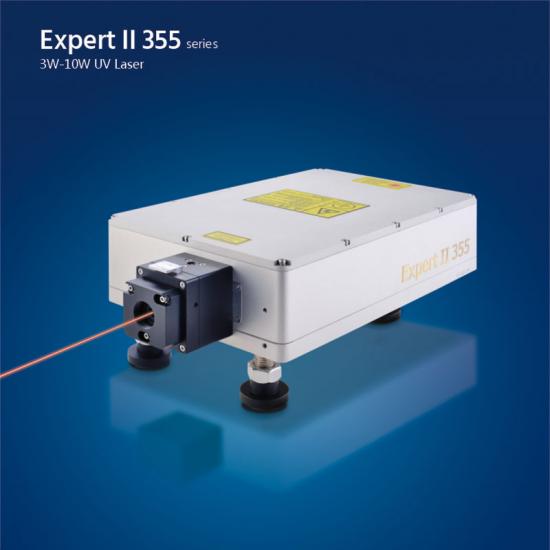Blog más reciente
Análisis de ventajas en la industria de PCB de marcado por láser uv de 3W
Oct 09 , 2021
El marcado láser es una tecnología de marcado muy avanzada. A través de la tecnología de grabado láser enfocado, los caracteres y patrones que deben marcarse se graban en la superficie del objeto. En comparación con la tecnología de impresión tradicional, el marcado láser tiene las características de buena calidad, alta consistencia, fuerte resistencia al desgaste, alta eficiencia, ahorro de costos, seguridad y confiabilidad, etc., y es ampliamente utilizado en la industria de PCB.
Demanda del mercado bajo el progreso tecnológico
Con el rápido desarrollo de la industria de TI, los teléfonos inteligentes, la electrónica portátil y otros productos continúan desarrollándose hacia la ligereza, la delgadez y la miniaturización. Los consumidores tienen requisitos cada vez más altos para los productos electrónicos, y también se debe mejorar la producción de placas de circuito impreso. Para lograr el control de calidad del proceso de producción de PCB, el marcado de caracteres, códigos unidimensionales, códigos bidimensionales y otra información sobre la PCB para la trazabilidad se ha convertido en la tendencia de desarrollo de la industria.
La tecnología de impresión tradicional es cada vez más incapaz de adaptarse a las nuevas necesidades tecnológicas del mercado debido a problemas como la poca resistencia al desgaste, la baja precisión, la mala estética y la contaminación ambiental. Por lo tanto, el marcado láser se ha convertido en una tendencia en la industria de PCB.

uv laser | green laser | Ultraviolet lasers | uv dpss laser | nanosecond laser | UV laser source | Solid State Lasers
The defects of traditional printing technology
Marking on the surface of the PCB board like pattern drawing, company LOGO printing, contact information, two-dimensional code, etc., in the past, silk screen printing in traditional printing was usually used. Under the original market demand, traditional printing technology can also meet the requirements of the market. However, as the quality of electronic products continues to improve, consumers' requirements are getting higher and higher, resulting in higher and higher marking quality of PCB boards in the market. Traditional printing Technology cannot adapt to new market requirements, and its shortcomings are becoming more and more obvious, such as:
1. Poor abrasion resistance. The abrasion resistance mentioned here is not the abrasion resistance of metal materials. It refers to the situation that the ink on the PCB surface is often worn away during use, resulting in blurring and discoloration.
2. Aesthetic requirements, the appearance of metal surface printing is relatively low-end, which is not suitable for some products with high appearance requirements, such as medals, metal business cards, exquisite company publicity nameplates, handicraft description nameplates, etc. Meet its appearance requirements.
3. In the ordinary printing process, organic solvents and heavy metal elements and other chemical raw materials are needed. These substances are toxic and can cause personal injury to the screen printing staff. In addition, during the drying process of the screen printing ink, the volatile chemical raw materials gradually volatilize into the air. , Pollution to the air and the environment.
Unique advantages of uv laser marking
The emergence of laser marking technology has successfully solved a series of problems in traditional printing technology. It is characterized by high marking accuracy, fast speed and stable performance. And it only needs to be controlled by a computer, the operation is simple, and it can print a variety of complex patterns, text, two-dimensional codes and other content, which fully meets the high-quality marking requirements of the existing PCB industry. Compared with traditional printing technology, laser marking technology has many advantages:
1. Good quality and strong wear resistance. The marking on the surface of the PCB board is clear and beautiful, and various LOGO, patterns, two-dimensional codes, and text can be marked, and the patterns are directly engraved on the material, which has more outstanding abrasion resistance;
2. High processing accuracy. After the laser beam emitted by the laser is focused, the minimum spot diameter can reach 10um (UV laser), which is of great help when dealing with complex graphics and precision processing;
3. High efficiency, simple operation and lower cost. The user only needs to set the parameters on the computer to mark directly, and the surface marking of the material can be completed in just a few seconds to ten seconds.
4. Non-destructive marking. Laser marking uses non-contact processing, the laser head does not need to touch the surface of the material, so there is no need to consider the damage to the material;
5. Wide range of use, safety and environmental protection. All kinds of thin metal/non-metal materials can be marked;
6. Stable performance and long service life of the equipment. With the development of technology, the service life of lasers has been greatly increased, and the service life of equipment has been greatly lengthened.
Application of UV laser marking and CO2 laser marking technology in PCB industry
In the laser marking application of PCB boards, UV laser marking and CO2 laser marking are the most used. UV laser marking and CO2 laser marking have become the preferred technology for PCB surface marking due to their low thermal impact, good processing effect, high precision, and high speed.
The PCB industry adopts laser marking two-dimensional code technology, which can realize PCB production, process and quality traceability, and realize automatic and intelligent management requirements to meet the needs of lean production, quality control, and process improvement. Marking two-dimensional codes on the PCB surface is currently a common demand of mid- to high-end customers and has been widely used.